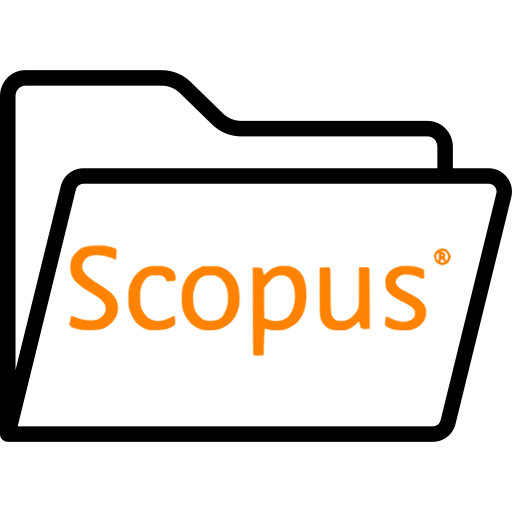Altınbaş Üniversitesi Kurumsal Akademik Arşivi
DSpace@Altınbaş, Altınbaş Üniversitesi tarafından doğrudan ve dolaylı olarak yayınlanan; kitap, makale, tez, bildiri, rapor, araştırma verisi gibi tüm akademik kaynakları uluslararası standartlarda dijital ortamda depolar, Üniversitenin akademik performansını izlemeye aracılık eder, kaynakları uzun süreli saklar ve telif haklarına uygun olarak Açık Erişime sunar.

Güncel Gönderiler
Structural investigation of asymptomatic microhematuria in human urine via ATR-FTIR spectroscopy
(Wiley, 2025) Çelik, C.; Doğan, A.; Ertek, A.; Özkaya, F.; Zorlu, F.; Silien, C.; Severcan, Feride
...
Spectral biomarker detection for diagnosis of bladder cancer from urine using ATR-FTIR spectroscopy
(Wiley, 2025) Dogas, A.; Celik, C.; Severcan, M.; Ertek, A.; Ozkaya, F.; Zorlu, F.; Silien, C.; Severcan, F.
...
Adaptive Decision Tree With Random Forest Integration And Dimensionality Reduction For Efficient Botnet Forensics
(Institute of Electrical and Electronics Engineers Inc., 2025) Alzubaidi, Ahmed Najm Obaid; Ibrahim, Abdullahi Abdu; Abdulrazzaq, Mohammed Majid
Adaptive Decision Tree with Random Forest Integration and Dimensionality Reduction for Efficient Botnet Forensics proposes a new method for botnet detection by combining an adaptive decision tree with random forest integration. As response variables are highly dimensioned in botnet detection, multistep and time-consuming detection processes are major challenges. With an integrated method, we could first model the response variables as multiclass and regression formats to simplify the construction of decision trees. Then, based on the adaptive decision tree feature selection, we filter out non-obvious features to efficiently establish the random forest regression model under the appropriately sized feature space. Furthermore, to handle multilabel classification, a random forest is employed as the global model in Tree-2-Rule procedures to detect botnet-affected communication behaviors. Finally, real data experiments have been conducted based on the top datasets. The results show that the adaptive decision tree has excellent improvements in efficiency and accuracy. In future research, the GPU ninthordinal censored multistate diagnosis data is useful observed materials that do not destroy the random effect influence of the data. Also, whether the application of the random forest model could save more time in analyzing existing commercial status is an issue to be clarified in future development. Additionally, the development of the method proposed in this research requires further investigation. We could improve and then propose the preferable solution based on the research results. Our proposed solution can be utilized as a tool for efficient real-time bot incident investigations, in accordance with both academic and business objectives.
“The silent strain: Exploring self-image and mental health in braced adolescents with scoliosis”: a scoping review
(Delhi Orthopedic Association, 2025) Al Hajaj, Sari Wathiq; Al Hajaj, Dawod; Singh, Prabhjit; Bharadwaj, Sanjeevi; Nair, Vishnu V.; Srinivasan, Sriram Harish
Background: Adolescent Idiopathic Scoliosis (AIS) is a common spinal deformity. It can create surface deformities that affect adolescents' psychosocial health. Bracing is a non-surgical method to prevent curve progression and avoid surgery. However, the psychosocial effects of long-term brace use during adolescence are often overlooked. issues like decreased self-esteem, social withdrawal, and appearance anxiety may hinder compliance and impact quality of life. Methods: A comprehensive literature review used PubMed, Cochrane Library, and ScienceDirect to identify studies from 2015 to 2025. It was prospectively registered with the PROSPERO database (Registration ID: CRD420251083129). The search terms included: "adolescent idiopathic scoliosis,” "bracing and self-image,” "bracing compliance,” and "psychological impact of bracing.” Two independent reviewers screened studies based on PICOS criteria: (1) adolescents with AIS, (2) bracing or conservative treatment, (3) control or observational groups, (4) outcomes like self-image, quality of life, or compliance, and (5) RCTs, observational studies, systematic reviews, or meta-analyses. Exclusions included surgical interventions, non-adolescents, or non-English publications. Results: We found 807 studies; after removing duplicates, irrelevant titles, and abstracts, 26 full texts were screened. Of these, 10 met all criteria and were included. Adolescents in brace treatment often face negative self-image, low self-esteem, and social anxiety, especially at therapy start, affecting adherence. Concerns about appearance and discomfort hinder compliance. Some adapt over time, but others continue to experience mental health issues. Interventions like cognitive-behavioural therapy (CBT), peer support, and special exercise programs improve coping, adherence, and psychological well-being. Conclusion: Bracing treats Adolescent Idiopathic Scoliosis (AIS) but affects psychosocial well-being, lowering adherence and quality of life. A multidisciplinary, patient-centred approach with mental health support is essential. Early psychological distress identification and interventions like Cognitive Behavioural Therapy (CBT) and peer support can enhance compliance and outcomes. Protocols should include psychosocial screening and holistic care to lessen the adverse effects of brace treatment.




















